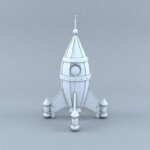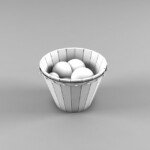Invisible Anchor: How CNCs Reduce Power Precision Machining
In the dazzling world of CNC machining, complex contours on aerospace components or exquisite medical implants come to life, with the focus often falling on multi-axis spindles or complex programming. However, under this tech fanaticism, it’s a basic one, usually not rated as a hero: CNC Vise. As a key link between raw materials and finished masterpieces, labor (especially vise) is not only convenient; it is the bedrock of precision, repeatability and safety in every machining operation. At Greatlight, we use advanced five-axis CNC machining to make complex metal parts every day, and we know for ourselves that even the most capable machines can only be as good as the visor that keeps the workpiece stable.
More than just a fixture: The key role of CNC Vises
The CNC Vise is far from a simple fixture. This is an accurate engineering device designed to secure the workpiece to the machine table while resisting huge cutting forces, vibrations and thermal fluctuations. Imagine machining a complex titanium aerospace bay: without absolute stability, tremor (vibration) can damage the surface finish, tool deflection can lead to dimensional errors, and unsafe maintenance is a safety hazard. as a result of? Cancel parts, damaged tools and expensive downtime. High-quality CNCs accompany direct impact:
- Accuracy and accuracy: Eliminate movement during cutting to ensure that features are accurately processed to specifications.
- Repeatability: Allowing to keep sequential parts in the same position is critical for production operations.
- rigidity: Absorbs cutting forces, minimize vibration and agitation to obtain a surface surface of the upper surface.
- Safety: Prevent catastrophic workpieces from ejecting at high speed.
- efficiency: Enable faster settings and consistent machining cycles.
Navigation Landscape: Types of CNC Vises
Choosing the correct vice requires understanding of the options available. The main categories are distinguished by their clamping mechanism and application:
-
Mechanical (manual) vistes:
- How they work: The moving chin is driven manually by rotating the lead screw.
- advantage: Simple, reliable, cost-effective, available, can be used to clamp fine parts with a good feel.
- shortcoming: Setting time is slow, clamping force depends on the operator’s strength/consistency, rather than ideal for high-capacity automation. Common subtypes include fixed alkalis (most rigid), rotating bases (for angle settings), and dual stations (holding two parts).
- Best for: Prototypes, low to medium production, workshops, require high operator control situations.
-
Hydraulic Landscape:
- How they work: The chin is operated through the inner piston using hydraulic pressure (usually generated by the power unit).
- advantage: Extreme and consistent clamping force is operator-independent, very fast operation (seconds), ideal for automation, reduces setup fatigue and is programmed on some models.
- shortcoming: Higher initial costs require hydraulic power units and pipes, and the possibility of hydraulic leakage is higher if not maintained.
- Best for: High volume production lines, automatic cells, require extreme rigidity and force applications (heavy duty roughness, most).
-
Pneumatic Vises:
- How they work: Use compressed air to activate the jaw.
- advantage: Faster than hydraulics, simpler/cleaner than hydraulics (oil-free), lower cost of work (using plant air), suitable for automation.
- shortcoming: Compared to hydraulic pressure, the maximum clamping force is significantly lower, requiring sufficient air supply from dry plants, and is not suitable for heavy processing that requires extreme forces.
- Best for: High-speed, lighter processing applications, large-scale colorless processing, medium-force is sufficient for automation.
- Professional and Senior Litigation:
- Zero point clamping system: Integrated with fast-changing pallets in exchange for near-utility visors or fixtures greatly reduces setup time (minimum downtime is key to our complex five-axis work on Greatlight).
- Tombstone/system: Installed on vertical side "tombstone" For horizontal machining centers, for multilateral access. It is crucial for efficient batch processing on HMC.
- Modular vise system: Allows assembled multiple or special jaws and disassembled like Lego blocks for complex parts fixation. Provides incredible flexibility.
- Low-key attractions: Designed with minimal height, for complex 5-axis work or almost table machining to avoid tool interference, which is often considered for our complex 5-axis work.
Choose your CNC Vise Champion: Key Factors
Choosing the best visor is not about buying the most expensive visor. This is a strategic decision based on:
- Machine tools and processes: Machine type (3-axis mill, HMC, 5-axis), work envelope, spindle power and tool access restrictions (especially 5-axis machines that require low-key design).
- Artifact properties: Material type, size, weight, shape, required tolerances, surface finish requirements. Thin-walled parts require careful distribution of clamping forces to avoid distortion.
- Production and automation: Large capacity requires speed and consistency – hydraulic or pneumatic automation shines. Low capacity/workshop may prioritize manual versatility. The rapid change (zero point) system logging setting time is common.
- Processing Strength: Heavier rough and hard materials require high clamping capabilities (debuted here). Consider the engagement and cutting depth of the cutter.
- Expected flexibility: Modular systems provide maximum adaptability to different parts, but with higher cost/complexity. Fixed systems provide simplicity and rigidity.
- Budget: Consider the total cost of ownership: purchase price, maintenance (hydraulic/pneumatic requires more) and the accessories/fixes required.
Maximize performance and lifespan: proper use and care
Visors are precise tools that require respect and maintenance:
- Key settings:
- clean: Make sure the machine table, visor, workpiece and jaw are impeccable.
- Algrnnment: Use a dial indicator or machine detection system to align the vise with the machine shaft exactly. Even a slight misalignment introduces errors.
- Torque: Use a torque wrench to tighten the mounting bolts to the manufacturer’s specifications consistently. Avoid over clamping screws/handles that will twist the vise body.
- Jaw selection and care: Secure stock with a hard jaw, and a soft jaw (usually aluminum) for custom contours. The machine jaw uses it accurately for optimal grip and minimal part deformation. Always make sure to properly support the jaw during processing. Replace worn or damaged jaws immediately.
- Clamping technology: Place the workpiece firmly. Apply force evenly near the fixed jaw. Use parallel lines to support thin parts. Always use the minimum clamping force required to be kept safely without twisting the parts (especially critical for thin sections).
- Strict maintenance:
- Lubricate according to the manufacturer’s schedule (Leadscrews, sliding surface for mechanical hydraulic fluid maintenance).
- Check for damage, wear (especially on jaw and sliding surfaces), debris buildup and oil leakage (hydraulic/pneumatic).
- Clean thoroughly after use. Protect precision ground surfaces.
Conclusion: The foundation of excellent processing
Although usually hidden under a pile of coolant and fries, CNC Vise is undoubtedly the unsung hero of precision-made. Its role in ensuring dimensional accuracy, surface quality and operating safety cannot be exaggerated. Whether it’s the strong mechanical surgical strength used in a multi-purpose workshop or the high-speed hydraulic system buzzing in an automatic cell, choosing and using the right vise is crucial.
At Greatlight, where we use advanced five-axis CNC machining capabilities every day to deal with complex geometry and tight tolerances, and cross aerospace, medical and industrial components every day, we recognize that extraordinary workforce is impossible. This is the foundation for us to provide a sophisticated one-stop post-processing and finishing solution that our customers rely on. We will carefully match our labor strategies, including selecting the best CNC litigation and systems with the unique needs of each project. Investing in the right vise is not only about holding the parts; it is about unlocking the full potential of CNC machinery and guaranteeing results worthy of your highest expectations. Visit Greatlight today to discuss our engineering expertise, advanced equipment and meticulous approaches, including the best labor solutions, to overcome your most challenging metal parts manufacturing dilemma.
FAQ: CNC vises mystery
Question 1: How often should I conduct professional inspections or rebuilds of CNC Vise?
A: There is no single schedule. This depends to a lot on the strength of use. High production stores may be inspected/recalibrated every 6-12 months. Regularly monitor for signs of wear or inconsistency (reduced clamping force, misalignment detection during setup, obvious gameplay). If accuracy suffers from motion or parts fail, repair it immediately.
Q2: Can a vise effectively maintain complex or irregular shape parts?
A: The standard vise chin fights irregular shapes. This is an essential place for custom-made soft jaws. Meticulously processed from soft materials such as aluminum to perfectly contour the shape of the parts, they provide excellent grip and minimize deformation. For highly complex parts, more advanced fixtures may be required.
Q3: Does hydraulic vis always taste better than mechanical vis?
Answer: Not sure. Hydraulics provide unparalleled speed, consistency and a large/automatic production force. However, mechanical access is often more cost-effective, simpler, and provides better "Feel" For delicate parts, no external power supply is required. The choice depends entirely on the specific requirements of the application (quantity, strength, automation requirements, budget).
Q4: What is it "Jaws of the feet" When will they be used?
A: Foot pliers are hardened steel jaws that accurately process the floor steps of different heights. They allow for fixing rectangular/square reserves of different sizes or shapes without the need to process custom soft jaws. They traded for the perfect outline fit of some soft jaws to provide versatility and speed in normal quantity sizes.
Q5: How critical is Vise alignment really for the simple part?
A: Always very critical. even "Simple" The part needs to be machined relative to its reference surface. If the vise is not aligned with the machine’s X-axis, the slot is inserted "Straight" Relative to the machine, the clamping edges of the part will be deflected in effect. This leads to parts. Precise vise alignment (using a dial indicator or machine probe) is a basic setup step that cannot be skipped regardless of part complexity.

















